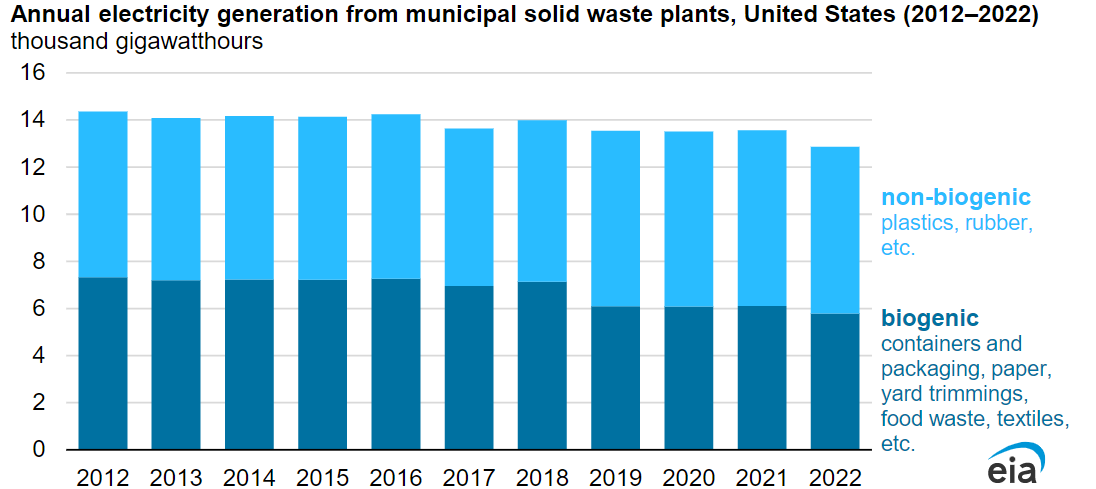U.S. Waste-to-Energy Generation Remains Minimal Despite Project Activity
The U.S. Energy Information Administration (EIA) notes waste-to-energy (WTE) power generation accounts for less than 1% of the U.S. energy mix, but Industrial Info is tracking $1.68 billion worth of related projects--including a plant expansion that would add new capacity.
Waste-to-energy generation involves burning waste, the heat of which is released to convert water to steam. The steam is then routed to a turbine generator to produce electricity.
Although WTE plants account for such a small portion of U.S. total power generation, the plants are a consistent source of baseload power, according to the EIA.
The agency said 60 WTE power plants were operating in the United States at the beginning of 2022--with a total generating capacity of 2,051 megawatts (MW)--and the majority are in urban areas along the East Coast.
One of the largest waste-to-energy-generation projects being tracked by Industrial Info is in Florida.
In Florida's Pasco County, Covanta Energy Corporation (Morristown, New Jersey) plans to begin construction in April on a $525 million waste-to-energy plant expansion at Pasco County Solid Waste Department's Pasco County Resource Recovery Facility. The project entails installing an additional municipal waste combustor to increase waste processing by 475 tons per day with a new 15-MW steam turbine generator. Completion is expected in 2025. Subscribers can click here for the project report, and click here for a plant profile.
Subscribers to the GMI Project Database can click here for a full list of detailed project reports related to waste-to-energy power generation.
Waste-to-energy projects could receive a boost from the Inflation Reduction Act (IRA), which modified the federal production tax credit (PTC) for electricity generated from certain renewable sources, including municipal solid waste. The IRA provision extended the construction-start date for projects eligible for the PTC, to those that begin construction before January 1, 2025.
However, waste-to-energy generation has been on the decline: from 2018 to 2022, 188 megawatts (MW) of WTE generating capacity was retired, the EIA noted last year--with another 36 MW to be retired by 2027. At the time, the EIA said, "low electricity prices, local opposition and continued policy concerns about emissions have pressured WTE plant owners to close in recent years." The agency also said related upfront capital-spending costs for constructing a new combustion plant "generally requires at least $100 million to finance construction."


